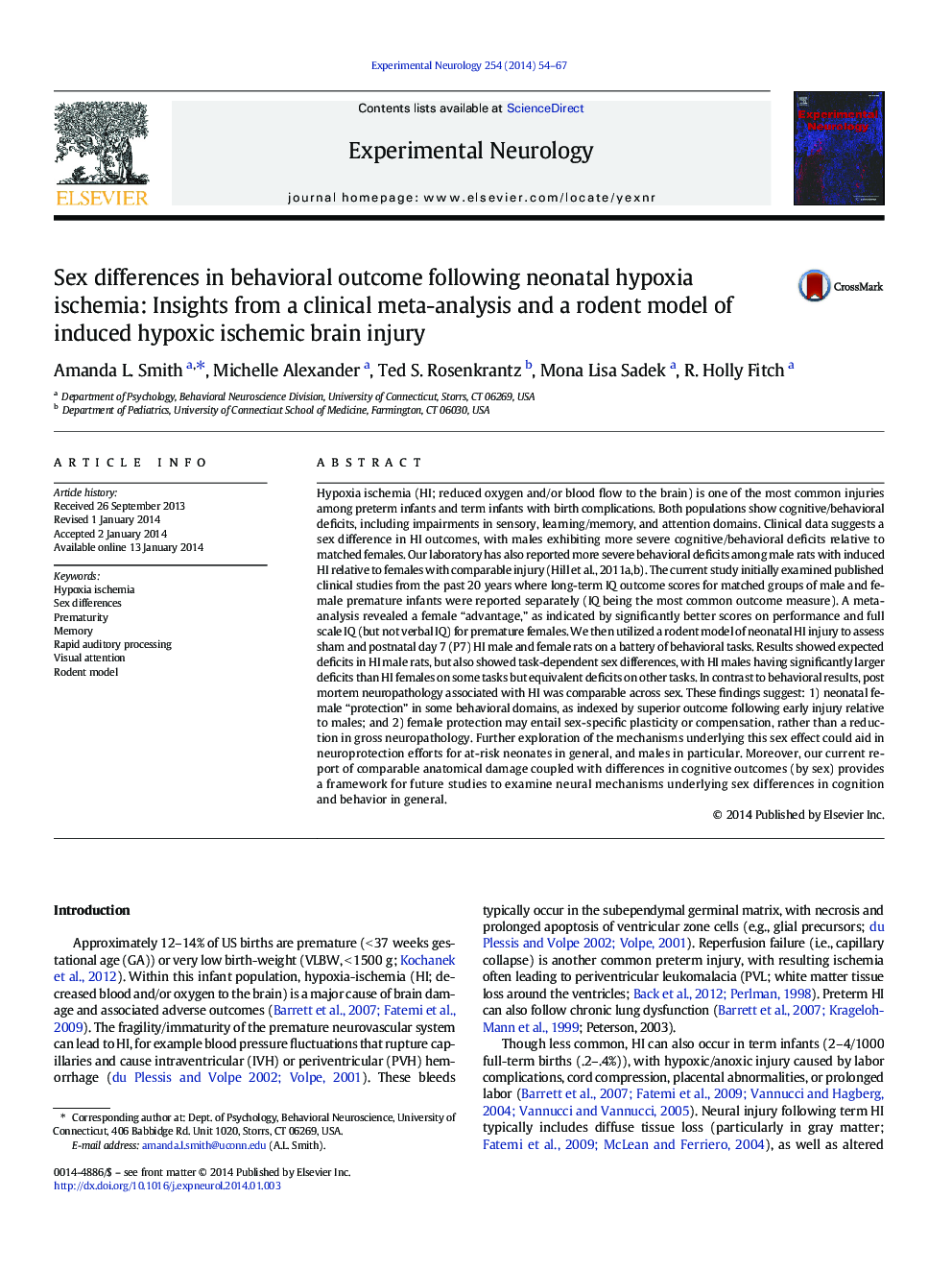| کد مقاله | کد نشریه | سال انتشار | مقاله انگلیسی | نسخه تمام متن |
|---|---|---|---|---|
| 6017868 | 1580178 | 2014 | 14 صفحه PDF | دانلود رایگان |
- A meta-analysis was done to assess sex differences following preterm birth.
- A rodent model of hypoxia ischemia was used to assess sex differences.
- Females show an advantage in outcome on most IQ measures in our meta-analysis.
- Female rodents show subtle task specific advantages compared to male rodents.
- Brain injury is similar between male and female rodents.
Hypoxia ischemia (HI; reduced oxygen and/or blood flow to the brain) is one of the most common injuries among preterm infants and term infants with birth complications. Both populations show cognitive/behavioral deficits, including impairments in sensory, learning/memory, and attention domains. Clinical data suggests a sex difference in HI outcomes, with males exhibiting more severe cognitive/behavioral deficits relative to matched females. Our laboratory has also reported more severe behavioral deficits among male rats with induced HI relative to females with comparable injury (Hill et al., 2011a,b). The current study initially examined published clinical studies from the past 20Â years where long-term IQ outcome scores for matched groups of male and female premature infants were reported separately (IQ being the most common outcome measure). A meta-analysis revealed a female “advantage,” as indicated by significantly better scores on performance and full scale IQ (but not verbal IQ) for premature females. We then utilized a rodent model of neonatal HI injury to assess sham and postnatal day 7 (P7) HI male and female rats on a battery of behavioral tasks. Results showed expected deficits in HI male rats, but also showed task-dependent sex differences, with HI males having significantly larger deficits than HI females on some tasks but equivalent deficits on other tasks. In contrast to behavioral results, post mortem neuropathology associated with HI was comparable across sex. These findings suggest: 1) neonatal female “protection” in some behavioral domains, as indexed by superior outcome following early injury relative to males; and 2) female protection may entail sex-specific plasticity or compensation, rather than a reduction in gross neuropathology. Further exploration of the mechanisms underlying this sex effect could aid in neuroprotection efforts for at-risk neonates in general, and males in particular. Moreover, our current report of comparable anatomical damage coupled with differences in cognitive outcomes (by sex) provides a framework for future studies to examine neural mechanisms underlying sex differences in cognition and behavior in general.
Journal: Experimental Neurology - Volume 254, April 2014, Pages 54-67
